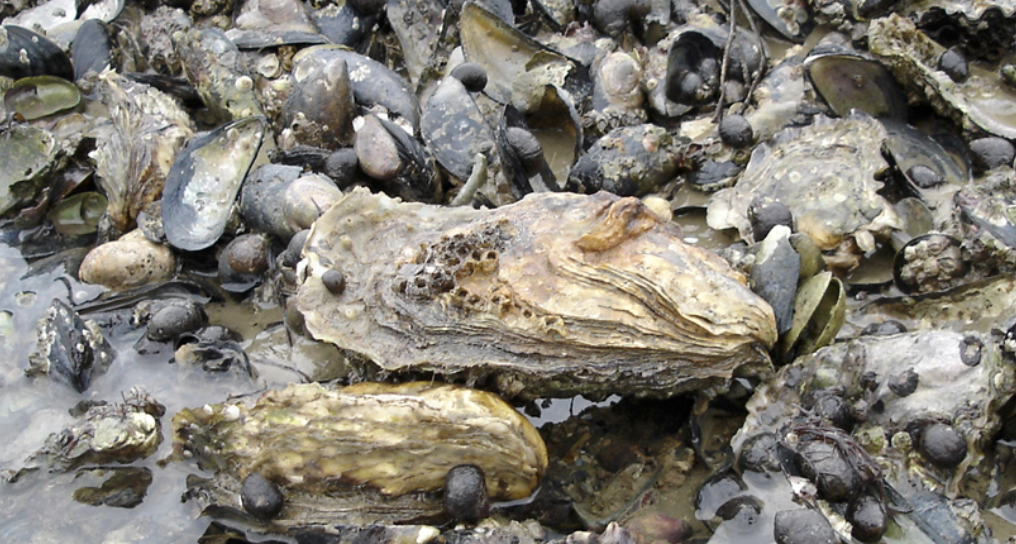
“I have no doubt that, whatever was the date of its origin, the credit of first truly propagating oysters from seed caught upon artificial beds or prepared receptacles, belongs to the men of City Island. It had been a matter of common observation that objects tossed into the water in summer sometimes became covered with infant oysters. The sedges along the edge of the marshes, and the buoys, stakes and wharf piles were similarly clothed. If the circumstances were favorable this deposit survived the winter, and the next spring the youngsters were large enough to be taken and transplanted. It was only a short step in logic, therefore, to conclude that if objects were thrown thickly in to the water on purpose to catch the floating spawn, a large quantity of young oysters might be secured, and saved for transplanting at very slight expense.”
—U.S. Bureau of Fisheries, 1880
As the Bureau of Fisheries reported in the 19th century, solid structures in the water near existing oyster populations were found to be capable of increasing abundance, biomass, and diversity of the species. However, when the bottom is covered by sand and silt, larvae will not settle and survive. They need hard-structure surfaces such as cured shell material that can be strategically deployed near existing oyster populations so that oyster larvae can settle and grow to maturity.
Oysters develop a three-dimensional reef architecture by settling onto hard-bottom surfaces and growing on top of each other for generations. The newly created habitat also provides shelter, a nursery, and food sources for hundreds of other species, including worms, crabs, shrimp, and fish, as well as immobile organisms such as mussels, barnacles, and sea anemones, which settle between the growing oysters.

Oysters improve water quality by filter feeding and by separating excess algae and other particles, and this contributes to cleaning the water around them. A single adult oyster can filter up to 50 gallons per day in the summer when the water is relatively warm. The improved water quality created by oyster populations supports underwater vegetation, such as eelgrass, which also plays an important role in a resilient wetland’s ecosystem.
Furthermore, oyster reefs protect the shorelines and local communities by increasing wave attenuation to minimize storm surges and flooding. This is particularly important in the face of environmental challenges resulting from climate change and the increase in storms.